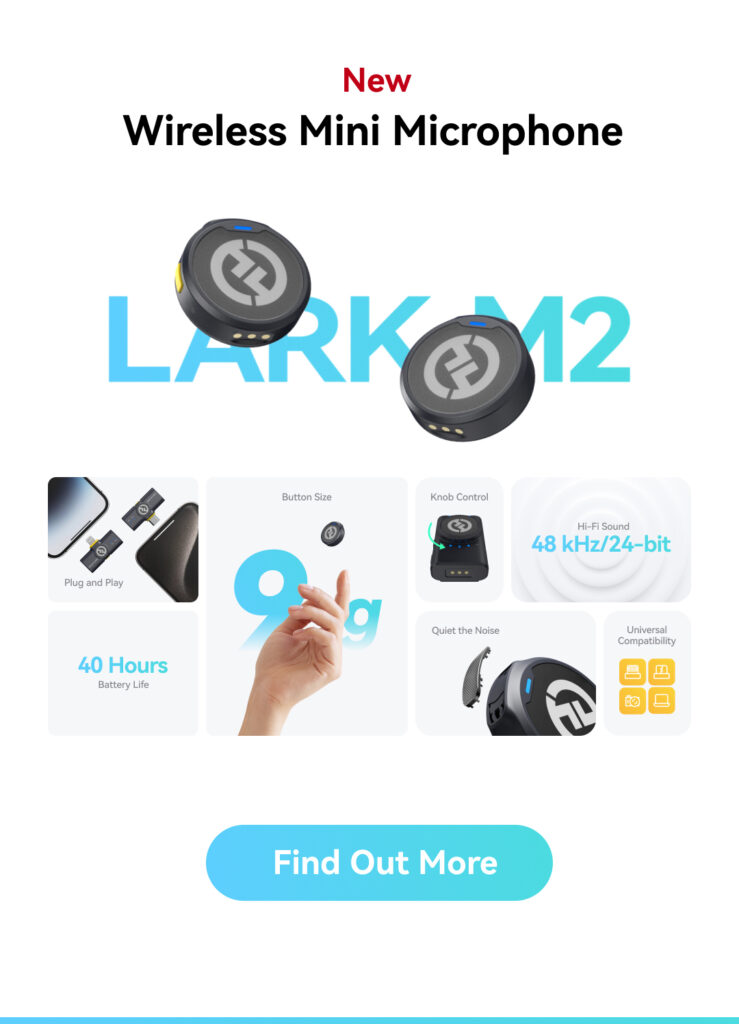The large diaphragm condenser microphone brought the revolution with its ability to record rich and high-detailed audio. It has become essential equipment to bring life to audio recordings with high sensitivity. Because of this, it has become a crucial part of musicians, content creators, and podcasters. It’s also considered best because of its gold audio capture standard.
These large diaphragm microphones can ideally pick up the slightest signal and give you the desired recording levels. And their versatility often makes it challenging to select the best microphone. However, this post has covered the best large diaphragm condenser microphones. So, choosing the microphone according to your specific needs is easy.
Key Factors to Look for in the Best Large Diaphragm Condenser Microphone
With technological advancements, choosing the best condenser microphone to provide quality recordings has become crucial. As the market is flourished with so many options, it’s necessary to filter out the microphones that can bring the desired results. So, there are some key factors to consider before buying the microphone.
Sensitivity:
It’s the most crucial factor because, with higher sensitivity, there is a louder microphone pick-up. With this, it’s desirable for musical instruments like piano or guitar and can capture little voices and nuances that other microphones might miss.
And it’s important to note that with high sensitivity, it can also pick up background noises and minimize interference, and it’s essential to record in a quiet place.
Polar Pattern:
The large diaphragm condenser microphones can pick up sounds from different directions. The cardioid pattern benefits musicians by focusing on picking up front voices and rejecting background noises. And omnidirectional is best for the group. So, it’s entirely dependent on the specific individual needs.
Frequency Response:
The importance of frequency response is critical in recording high-quality vocals. The higher frequency can record the singer’s voice from low-end to high-end and produce a rich high-detailed voice. Although some microphones focus on high-end frequencies, it depends on your needs.
Sound level:
It refers to the loudness of the sound source it can handle perfectly. Also, it measures the self-generated noise produced by the microphone. Low noise levels can minimize background noises and make the recordings clear and natural. And the large diaphragm microphones have sound levels in the 13db to 16db.
The Best Large Diaphragm Condenser Microphone | Top 6 Picks
A large diaphragm microphone comes to mind when recording vocals with higher sensitivity. After extensive research, we have saturated the vast market and picked up the best large diaphragm condenser microphones. Let’s dive into the best condenser microphones that will revolutionize your recordings.
- Neumann U 87
- Lewitt LCT 440 PURE
- SE Electronics X1 S
- Telefunken TF47
- Hollyland Lark M1
- Hollyland Lark Max
Neumann U 87
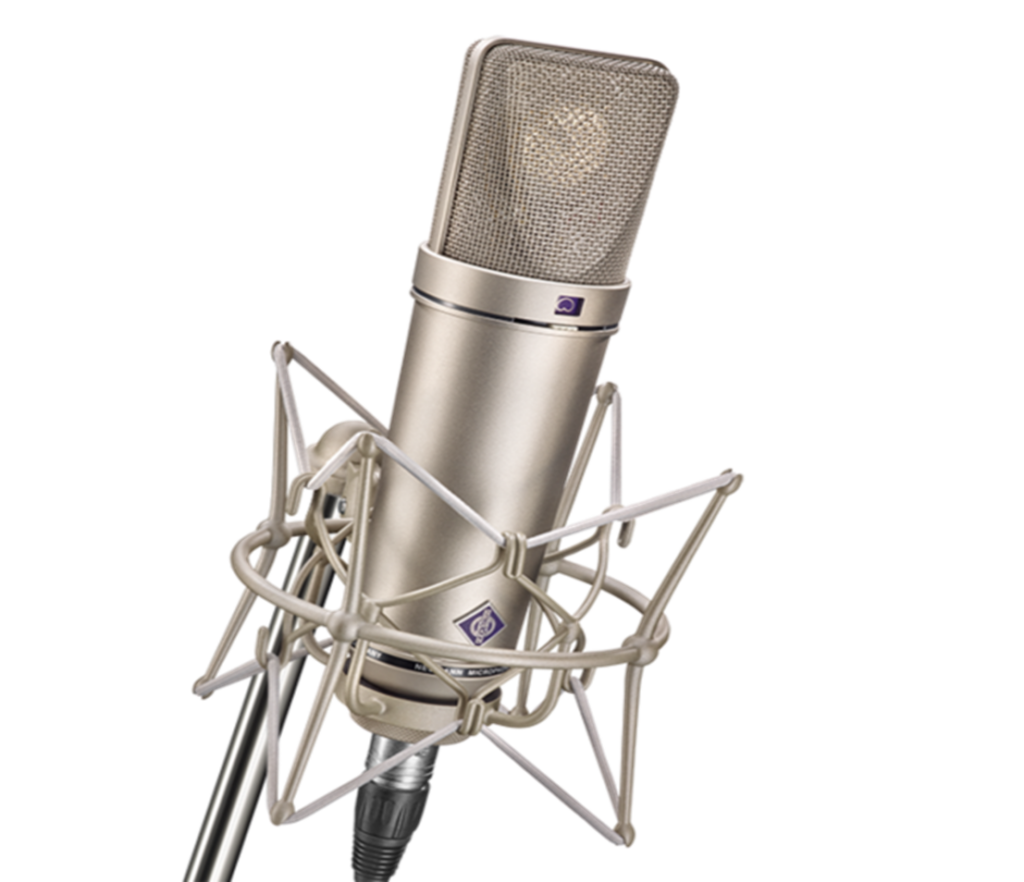
https://www.neumann.com/en-en/products/microphones/u-87-ai/
The old legend is back with its classical exterior design and intelligence that embark on giving gold standard in vocals and speech. Its performance brings versatility, providing three polar patterns to capture rich, high-detailed audio. And you can switch between these polar patterns according to your specific needs.
Due to its dual-diaphragm capsule, it brings clarity to the studio performances with optimal signal and balanced frequency response. It is widely desirable because of its extensive low-noise feature that avoids interruptions and makes the results highly detailed. It’s a worldwide recognized condenser microphone for serious musicians.
Pros:
- Allrounder companion
- Gold Standard quality
- Balanced frequency response
- Brings confidence
Cons:
- Not for beginners
- A quiet ambiance is needed
- Expensive
Also, switchable low-cut filters reduce the lower frequency noises of the surrounding ambiance. With higher sensitivity of -10 dB, it can capture distortion-free louder sound pressure levels of 127 dB. So, it captures elegant and high-quality sound, making it the globally best large diaphragm condenser microphone.
Quantitative Measurement
- Durability: 9.5/10
- Materials: 9.5/10
- Design: 9.5/10
- Uniqueness: 9/10
Lewitt LCT 440 PURE
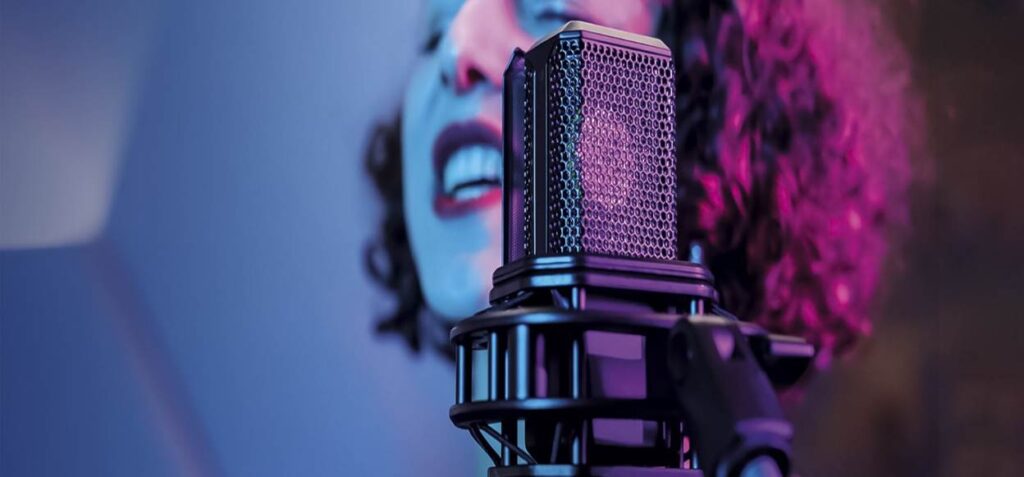
https://www.lewitt-audio.com/microphones/lct-recording/lct-440-pure
Experience pure studio sound with high-end technology and prestigious design. It brings flexibility and unrestricted freedom while performing, giving you outstanding quality and sensational sound. It brings life to studio sound with its 1″ large diaphragm condenser, and it brings clarity by catching the depth of your vocals.
In addition, the classical output signal has a sensitivity of -31 dB, which enables it to capture the sound with rich details. And it also reduces the self-generated noises by as low as 7 dB. With this, it’s only focused on picking up the external sounds and bringing clarity to the audio recording.
Pros:
- Low self-noise level
- Durable zinc enclosure
- Budget-friendly
- Excellent choice for rich details
Cons:
- Only cardioid
- No storage box
Besides this, it has been considered an allrounder because of its extended sound pressure levels (SPLs) of 140 dB. This level has made the LCT 440 Pure capture the distortion-free vocals of loud drums and guitars.
And Cardioid Polar Pattern is focused only on picking up the front voices and eliminating the background noises. Furthermore, the foam windscreens will eliminate the fans and AC noises and give you a larger-than-life vocal experience.
Quantitative Measurement
- Durability: 9/10
- Materials: 9.5/10
- Design: 9.5/10
- Uniqueness: 9/10
SE Electronics X1 S
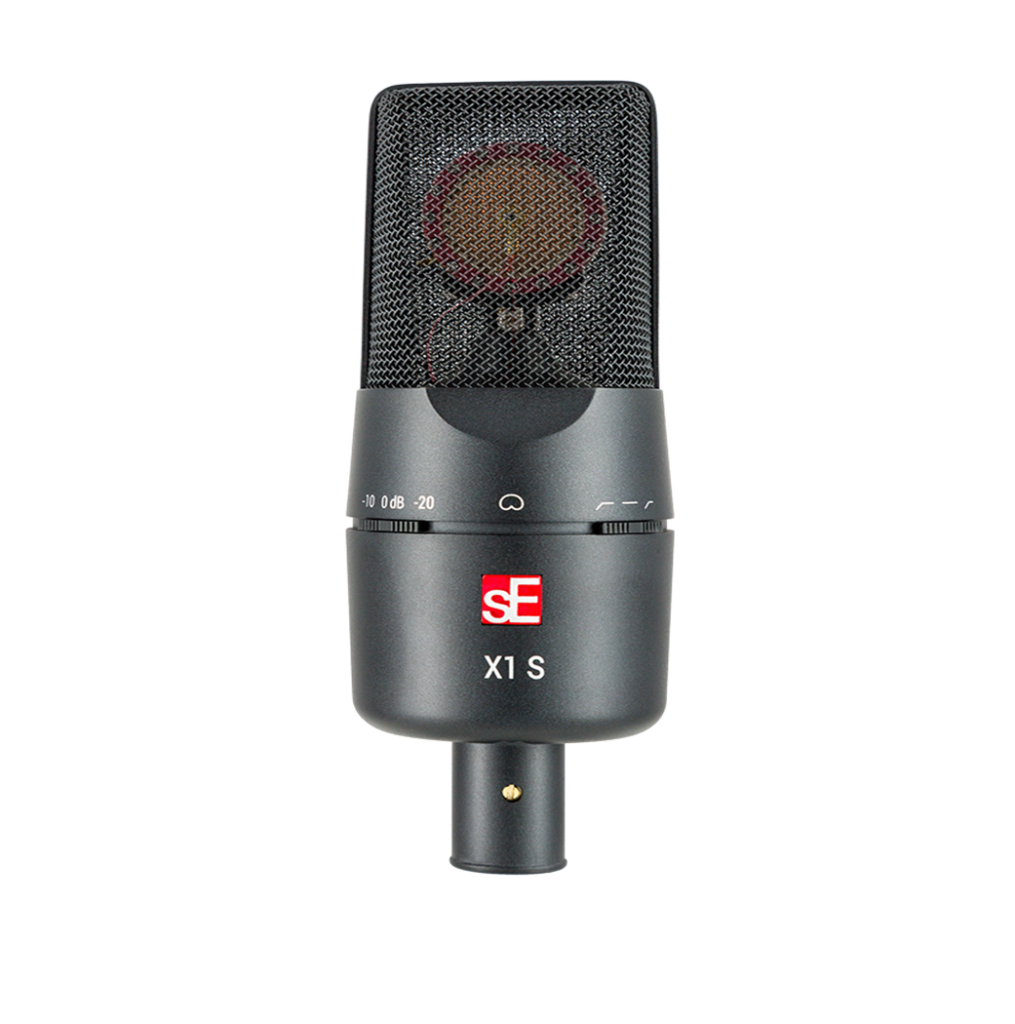
https://seelectronics.com/products/x1-s/
When looking for an inexpensive and classical large diaphragm microphone condenser, sE Electronics has you covered. Its high-detailed and rich vocals are possible with a gold-sputtered 1″ large diaphragm condenser, making it the best large diaphragm condenser microphone.
This large diaphragm brings smoothness to the sound of males or females, making it an excellent choice for acoustic instruments. Extensive background noises and Low-Cut Filters will remove the low-frequency signals when performing within the studio.
SE Electronics is preferred because of its ability to handle loud noises with minimal backgrounds and low self-noise. So, it’s always handy to bring X1 S because of its wider diaphragm and rich, detailed capture.
Pros:
- Hand-made gold-sputtered capsule
- 80-160 Hz Bass Filters
- Versatile and outstanding design
- Budget-friendly
Cons:
- Resonance in the metal case
Although it is a Cardioid-focused microphone, Switchable Pads of different frequencies provide the best quality audio. The higher sensitivity captures the high-detailed sounds of 160 dB and gives the best vocal experience. You will observe the smoothness in sound with -125 Ohm impedance.
Quantitative Measurement
- Durability: 9/10
- Materials: 8/10
- Design: 9/10
- Uniqueness: 9.5/10
Telefunken TF47
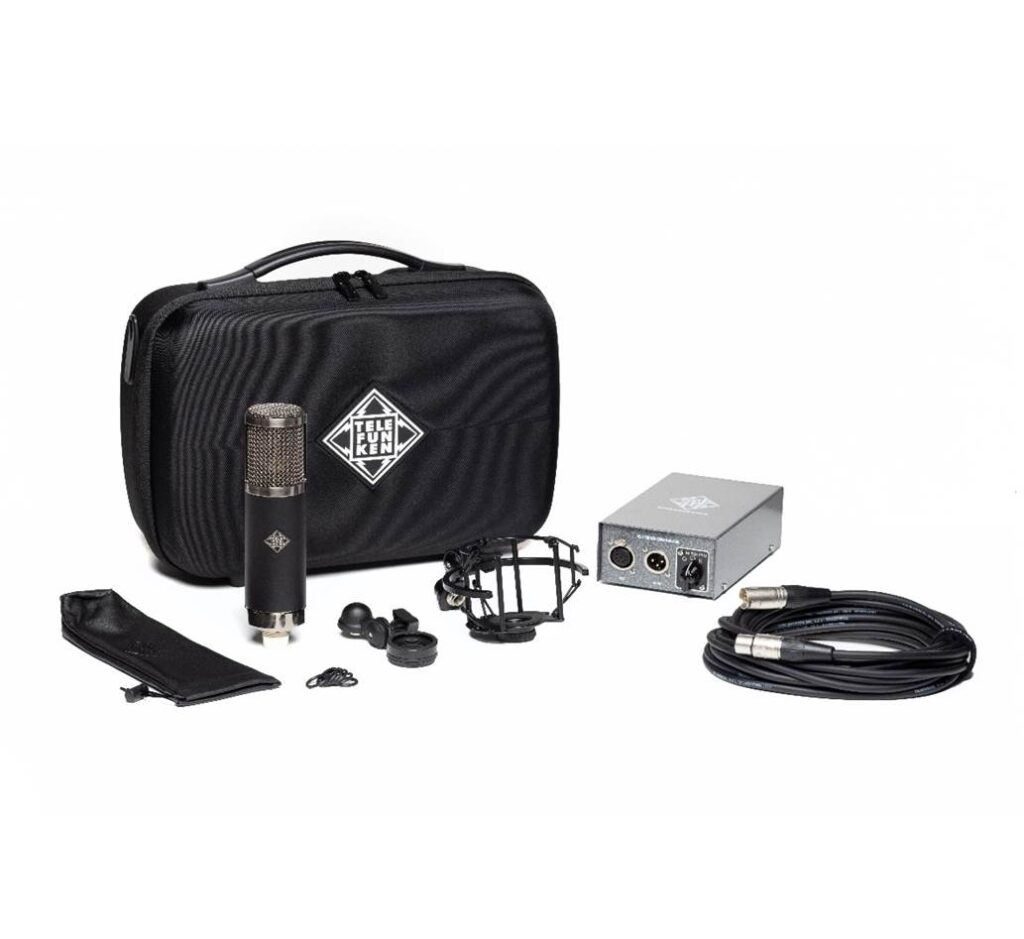
TF47
The Telefunken is designed on classical German sound, bringing depth and rich quality to any vocals. Due to its excellent quality, it’s used by male and female singers because it can capture low-end to high-end efficiently. And BV8 transformer and vacuum condenser can deliver top-notch and crisp sound.
And its high-frequency range of 20 Hz to 20 KHz is enough to capture the small signal from musical instruments with high accuracy. The high-sensitivity level of the microphone can make it catch the loudest sounds at 125 dB. And it is also possible with a large diaphragm size of 200mm.
Pros:
- Perfect for male/female
- Smooth and high-detailed audio
- Low self-noise
- Solid and classical design
Cons:
- Expensive
Also, with its three-dimensional polar patterns, it can pick up sound from every direction or focus on the front vocals. The Pressure Gradient Condenser can detect the difference in pressure and amount of sound entering the microphone diaphragm. It’s usually an added advantage for omnidirectional patterns.
Quantitative Measurement
- Durability: 8.5/10
- Materials: 8/10
- Design: 9/10
- Uniqueness: 9/10
Hollyland Lark M1
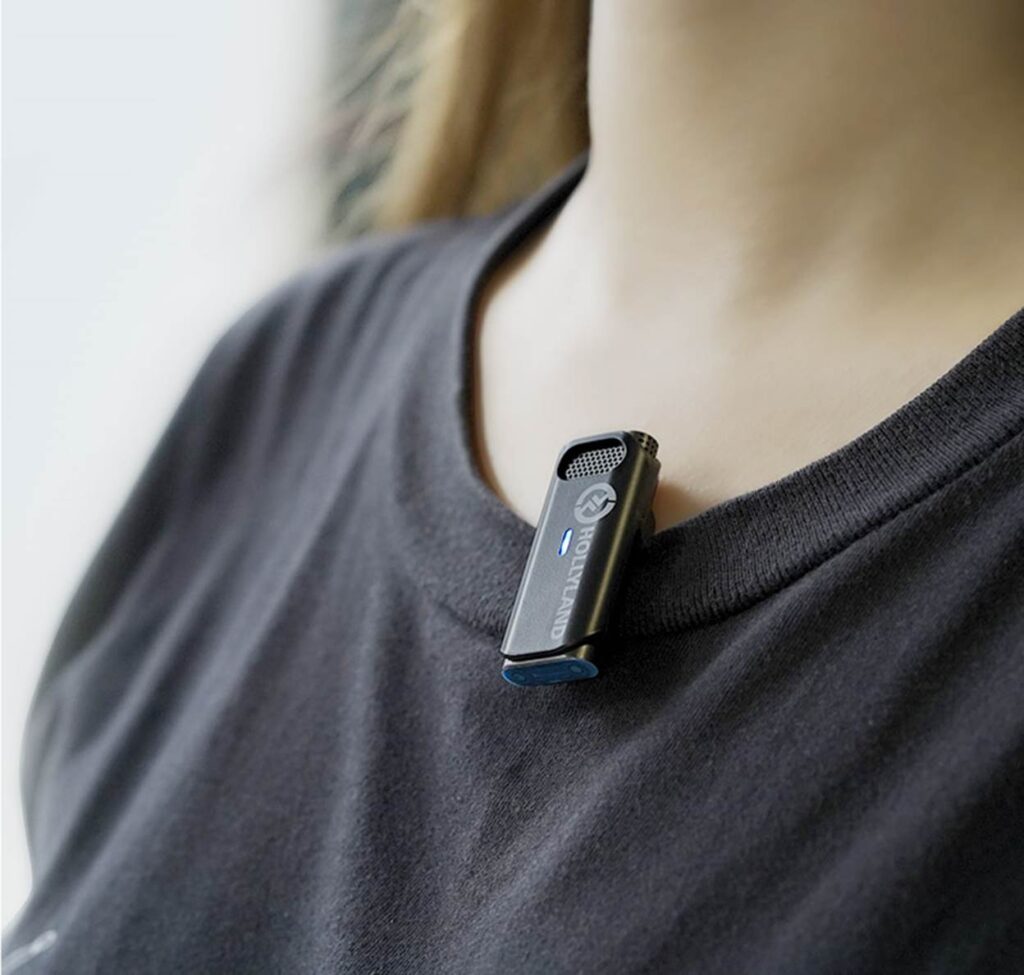
This tiny but mighty technology can capture high-frequency signals from a distance of 656 feet. And the omnidirectional pattern enables it to pick up signals from all directions with great detail. The two built-in transmitters, built on plug-and-play pairing, can easily connect with the receiver and deliver rich quality sound.
The three different noise levels ensure the pick-up of high-detailed noise in a closed ambiance. A lightweight design of 11.8 grams brings a tremendous experience to vocals and is equipped with auto-volume adjustments.
Pros:
- HiFi Sound Quality with 16-bit to 48 KHz.
- Furry windscreens bring smoothness
- Lightweight and sleek design
Cons:
- The charge and storage case is bumpy
Although with its omnidirectional pattern, it can pick up sounds from every direction, and Noise Cancellation 2.0 Technology can remove the background noises. It brings clarity and smoothness to audio vocals to boost your confidence.
Its cutting-edge lavalier design brings flexibility and reliability and can perform for more extended 20 hours with rechargeable lithium-ion batteries. It is compatible with multiple devices with 3.5mm TRS or TRRS cables.
Quantitative Measurement
- Durability: 8/10
- Materials: 8.5/10
- Design: 8/10
- Uniqueness: 9/10
Hollyland Lark Max
The Hollyland Lark Max is not a diaphragm microphone, but the reason why it is added to this list is its astonishing benefits, which are no less than those of big, bulky mics.
By pairing transmitters with the receiver, you can use them as your main audio input in various devices, including a computer, camera, or smartphone. Contrarily, this wireless microphone also gives you the advantage of recording audio directly for approximately 14 hours by speaking into the transmitters.
The receiver has a proper menu system and a screen that lets you adjust and monitor settings easily. The batteries of both units (TX and RX) last for up to 22 hours when used with a fully charged case. On the other hand, you can savor recording your favorite sounds and vocals for up to 7.5 hours wirelessly when units are unplugged from the case.
With a wireless transmission range of 250 meters (820ft), the Hollyland Lark Max ensures recording audio in the highest quality without disturbing background noises through MaxTimbre and Environmental Noise Cancellation technology. To enhance your audio quality further, this wireless mic kit enables you to capture sound in three vocal settings: low cut, vocal boost, and Hi-Fi.
The Hollyland Lark Max is one of the best alternative solutions to large diaphragm microphones at pocket-friendly pricing.
Pros:
- Super sound quality
- Omnidirectional polar patterned transmitters
- Strong, aesthetic charging case
- User-friendly design and menu
Cons:
- The ENC may not work properly in extremely loud environments
Quantitative Measurement
- Durability: 8/10
- Materials: 8/10
- Design: 7.5/10
- Uniqueness: 9/10
Conclusion
Large-diaphragm microphones can capture your performance’s wide range and nuance. And choosing the right microphone is possible by focusing on the key factors and their overall performance. This post has covered the best large diaphragm condenser microphones ranging from budget-friendly to gold-standard vocal quality. These microphones will help you capture high-detailed and natural vocals and are the perfect choice for musicians.
So, investing in large diaphragm microphones feels like investing in the future and is the first step towards excellence.
Frequently Asked Questions
What are the disadvantages of large diaphragm microphones?
High sensitivity makes it prone to background noises and can pick up the surrounding voices. Besides this, its self-noise level can interfere with the recording and pick up shock vibrations in case of a poor shock mount. And it requires an external power source for proper functionality.
How should I properly care for my large diaphragm condenser microphone?
The durability depends on how you handle your microphones. For perfection in performance, avoid exposing the microphone to humidity or temperatures. Also, soft brushes should be used for cleaning the microphone. And handling and storing with tender care is necessary to capture warm, punchy sounds.



